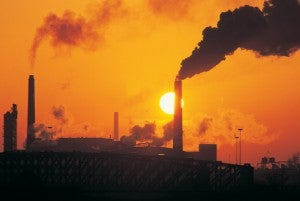(This post was written by EDF attorney Megan Ceronsky and legal fellow Peter Heisler)
The newly-released Third National Climate Assessment has some eye-opening news about climate change.
The report confirms that if greenhouse gas emissions are not reduced it is likely that American communities will experience:
- increased severity of dangerous smog and particulate pollution in many regions[1]
- intensified precipitation events, hurricanes, and storm surges[2]
- reduced precipitation and runoff in the arid West[3]
- reduced crop yields and livestock productivity[4]
- increases in fires, insect pests, and the prevalence of diseases transmitted by food, water, and insects[5]
- increased risk of illness and death due to extreme heat[6]

Source: Flickr/Eric Schmuttenmaer
Extreme weather imposes a high cost on our communities, our livelihoods, and our lives. The National Climatic Data Center reports that the United States experienced seven climate disasters that each caused more than a billion dollars of damage in 2013, including the devastating floods in Colorado and extreme droughts in western states.[7]
These are precisely the type of impacts projected to affect American communities with increasing frequency and severity as climate-destabilizing emissions continue to accumulate in the atmosphere.
Fossil fuel-fired power plants are far and away the largest source of greenhouse gas emissions in the United States, emitting more than two billion metric tons of carbon dioxide in 2012 — equivalent to 40 percent of U.S. carbon pollution and nearly one-third of total U.S. greenhouse gas emissions.[8]
Yet there are currently no legal limits on the amount of carbon dioxide power plants can release into the atmosphere.
This June, the Environmental Protection Agency (EPA) will, at long last, propose Carbon Pollution Standards for existing power plants.
The solutions we need to achieve significant reductions of carbon pollution from our nation’s largest source are at hand — including changes at existing power plants to reduce emissions, shifting utilization towards lower-polluting generation and away from higher-polluting generation, and deploying renewable energy and energy efficiency.
The health-improving, cost-saving, job-creating benefits of these proven techniques should be shouted from the rooftops.
States and power companies are already capitalizing on opportunities to reduce carbon pollution and other health-harming air pollutants by switching to lower-emitting generation.
Look, for example, at Colorado.
The Clean Air-Clean Jobs Act, which passed with bipartisan support and was signed by Governor Bill Ritter in 2010,[9] will significantly improve air quality while ensuring a reliable supply of electricity.
Under the Act, Xcel Energy plans to replace aging, high-emitting coal-fired units in the Denver metro area with lower-emitting resources, including state-of-the-art efficient combined-cycle natural gas plants that can quickly cycle to complement plentiful wind power and energy efficiency.[10] These changes will help Xcel reduce carbon dioxide emissions from its Colorado fleet by 28 percent by 2020 as well as[11] nitrogen oxide emissions by 86 percent, sulfur dioxide emissions by 83 percent, and mercury emissions by 82 percent.
Reducing emissions of these dangerous pollutants will save lives, reduce the number of nonfatal heart attacks, reduce cases of chronic bronchitis and asthma attacks, and avoid hospital admissions and emergency room visits.[12]
Xcel Energy expects that the projects will inject $590 million into the state’s economy and support 1,500 jobs.[13]
Colorado is also leading the way in renewable energy and energy efficiency. The state’s renewable energy standard (RES) — which was put in place by a ballot initiative in 2004 — now requires investor-owned utilities to supply 30 percent, and municipal utilities and cooperatives to supply 10 percent, of their retail sales with renewable energy by 2020.[14] Colorado’s energy efficiency resource standard (EERS) sets a goal for investor-owned utilities of 5 percent savings of 2006 peak demand by 2018 through demand-side management programs for their customers.[15]
The RES is expected to avoid 30 million tons of carbon dioxide emissions, create more than 30,000 jobs, and generate $4.3 billion in economic output.[16]
As for energy efficiency, in 2013 Xcel’s demand-side management plan saved 384.2 gigawatt hours of electricity (exceeding the goal approved by the Public Utilities Commission)[17] and avoided more than 280,000 tons of carbon dioxide and close to 230,000 pounds of sulfur dioxide from electricity generation.[18]
Renewable energy has taken off in recent months and years, replacing higher-emitting sources of energy and creating jobs. Between 2011 and 2013, wind generation in the United States increased by 40 percent,[19] and in January 2014, the United States had a record month for wind power with generation of nearly 18,000 gigawatt hours.[20]
Xcel Energy recently announced 700 megawatts of new wind energy in New Mexico, Oklahoma, and Texas, which it estimates will save customers up to $590 million in fuel costs.[21] Xcel says it is adding wind capacity “purely on economics and the savings we can deliver to our customers,” as the price of energy from the new facilities will be less than that from the company’s natural gas-fired plants.[22]
Solar power is on the rise as well. In 2012, rooftop solar panels cost approximately one percent of what they did 35 years ago,[23] and the cost of solar panels fell by 60 percent from 2011 to 2013.[24] Since 2008, as the cost of a solar module dropped from $3.40 per watt to 80 cents per watt, solar deployment has jumped by about 10 times.[25] In 2013 alone, solar photovoltaic installations increased by 41 percent, to a record 4.75 gigawatts, outpacing the industry’s own projections.[26]
Utilities and their customers are also seeing the advantages of solar energy. In March 2014, Austin Energy bought 150 megawatts of solar power at a price just below five cents per kilowatt hour — one of the lowest prices for solar yet which will likely lower rates.[27] And solar produces high-quality jobs, too, with the industry employing about 143,000 Americans at the end of 2013 and surpassing growth expectations for that year.[28]
Along with renewables, energy efficiency will play a key role in reducing carbon pollution while at the same time saving businesses and families money on their energy bills and creating high-paying jobs.
A recent report by the American Council for an Energy-Efficient Economy lays out several policies that states could use to meet their carbon-reduction goals, including energy-efficiency targets, building codes, appliance standards, and new combined heat and power systems.[29] If adopted, in the year 2030 these policies could:
- reduce emissions of carbon dioxide by about 600 million tons, of sulfure dioxide by about 980,000 tons, and of nitrogen oxides by about 527,000 tons[30]
- save 925 million megawatt hours of electricity in 2030,[31] avoiding about $48 billion in energy costs[32]
- and support 611,000 jobs, creating 6.2 million job-years from 2016 to 2030.[33]
Energy efficiency not only offers a cost-effective way to reduce pollution and positively impact the economy, but also improves comfort and health, increases productivity, and cuts utility bills for homes and businesses, savings that can be spent on other goods and services.[34]
Several organizations have outlined approaches to reducing carbon pollution under the Clean Air Act, and their analysis shows that the Carbon Pollution Standards can protect the climate while at the same time reducing emissions of other dangerous air pollutants. For example, NRDC estimates that its proposal would reduce harmful sulfur dioxide and nitrogen oxide emissions, saving thousands of lives, preventing 17,000 asthma attacks per year, and avoiding more than 1,000 emergency room visits and hospital admissions per year.[35]
Similar health benefits would be provided by Clean Air Task Force’s proposed framework, which would avoid 446,000 tons (31 percent) of sulfur dioxide and 402,000 tons of nitrogen oxide (24 percent) emissions relative to the base case by 2020.[36]
And Resources for the Future projects co-benefits from sulfur dioxide reductions ranging from $17 billion to $22 billion in 2010 dollars by 2020.[37]
Moving forward under the President’s Climate Action Plan to address carbon pollution from power plants couldn’t be more urgent. In addition to the reductions in harmful air pollution discussed above, the National Climate Assessment explains that without abating climate change:
“Summers are longer and hotter, and extended periods of unusual heat last longer than any living American has ever experienced. Winters are generally shorter and warmer. Rain comes in heavier downpours. People are seeing changes in the length and severity of seasonal allergies, the plant varieties that thrive in their gardens, and the kinds of birds they see in any particular month in their neighborhoods.
“Other changes are even more dramatic. Residents of some coastal cities see their streets flood more regularly during storms and high tides. Inland cities near large rivers also experience more flooding, especially in the Midwest and Northeast. . . . Hotter and drier weather and earlier snowmelt mean that wildfires in the West start earlier in the spring, last later into the fall, and burn more acreage. . . .”
An upcoming blog will take a closer look at climate change and its impacts on public health in the U.S. First, though, we will highlight some of the many successes states and power companies have had in deploying clean energy and energy efficiency, and explain the legal foundations for Carbon Pollution Standards that build on this experience and support the expansion of clean energy and energy efficiency programs.
These investments will not only cut emissions of carbon and other pollutants, but also provide homegrown energy, create jobs, and cut utility bills for American homes and businesses. This is the right path forward for our communities, our kids, and our economy.
[1] U.S. Global Change Research Program, Climate Change Impacts in the United States, at 222 (2014), available at http://nca2014.globalchange.gov/downloads.
[2] Id. at 37, 42, 45.
[3] Id. at 465.
[4] Id. at 152, 157.
[5] Id. at 223, 225-26.
[6] Id. at 224.
[7] National Climatic Data Center, Billion-Dollar U.S. Weather/Climate Disasters 1980-2013 (2014), available at www.ncdc.noaa.gov/billions/events.pdf.
[8] EPA, Inventory of U.S. Greenhouse Gas Emissions and Sinks: 1990-2012, at 2-4 tbl. 2-1 (Apr. 2014), available at http://www.epa.gov/climatechange/ghgemissions/usinventoryreport.html.
[9] Press Release, Bill Ritter: Colorado’s Governor, Gov. Ritter Signs Historic Clean Air-Clean Jobs Act (Apr. 19, 2010), http://www.colorado.gov/cs/Satellite%3Fc%3DPage&cid%3D1251573927379&p%3D1251573927379&pagename%3DGovRitter%252FGOVRLayout).
[10] Colorado Clean Air – Clean Jobs Plan, Xcel Energy, http://www.xcelenergy.com/Environment/Doing_Our_Part/Clean_Air_Projects/Colorado_Clean_Air_-_Clean_Jobs_Plan (last visited Apr. 11, 2014).
[11] Id.
[12] Answer Testimony of Leland B. Deck, Before the Pub. Utilities Comm’n of Colo., Docket No. 10M-245E (Sept. 17, 2010), available at https://www.dora.state.co.us/pls/efi/EFI_Search_UI.search.
[13] Id.
[14] Renewable Energy Standard, Database of State Incentives for Renewables & Efficiency, http://www.dsireusa.org/incentives/incentive.cfm?Incentive_Code=CO24R&re=0&ee=0 (last visited May 3, 2014).
[15] Energy Efficiency Resource Standard, Database of State Incentives for Renewables & Efficiency, http://www.dsireusa.org/incentives/incentive.cfm?Incentive_Code=CO46R&re=0&ee=0 (last visited May 3, 2014).
[16] Jeff Lyng & Tom Plant, Governor’s Energy Office, Colorado’s 30% Renewable Energy Standard:
Policy Design and New Markets, at 10 (Aug. 2010), available at http://cnee.colostate.edu/graphics/uploads/HB10-1001-Colorados-30-percent-Renewable-Energy-Standard.pdf.
[17] Xcel Energy, Demand-Side Management Annual Status Report:
Electric and Natural Gas:
Public Service Company of Colorado, at 2 (Apr. 2014), available at https://www.xcelenergy.com/staticfiles/xe/Regulatory/Regulatory%20PDFs/CO-DSM/2013-CO-DSM-Annual-Status-Report.pdf.
[18] Id. at 15, tbl. 6.
[19] Energy Info. Admin., Electric Power Monthly, Table 1.1.A (Feb. 2014), available at http://www.eia.gov/electricity/monthly/epm_table_grapher.cfm?t=epmt_1_01_a.
[20] Id.
[21] Xcel Energy, New Mexico and Texas Wind Power: We Are Leveraging the Wind, http://www.xcelenergy.com/Environment/Renewable_Energy/Wind/New_Mexico_and_Texas_Wind_Power (last visited May 1, 2014).
[22] Tom Gray, Citing Low Costs, Xcel Energy Plans ‘Significant Increase’ in Wind Purchases, Into the Wind: The AWEA Blog (July 11, 2013), http://aweablog.org/blog/post/citing-low-costs-xcel-energy-plans-significant-increase-in-wind-purchases.
[23] Dep’t of Energy, Revolution Now: The Future Arrives for Four Clean Energy Technologies, at 4 (Sept. 2013), available at http://energy.gov/sites/prod/files/2013/09/f2/Revolution%20Now%20–%20The%20Future%20Arrives%20for%20Four%20Clean%20Energy%20Technologies.pdf.
[24] Ian Clover, US Solar Power Costs Fall 60% in Just 18 Months, pv magazine (Sept. 20, 2013), http://www.pv-magazine.com/news/details/beitrag/us-solar-power-costs-fall-60-in-just-18-months_100012797/#axzz2qg0NDEBG.
[25] Dep’t of Energy, Revolution Now: The Future Arrives for Four Clean Energy Technologies, at 4-5 (Sept. 2013), available at http://energy.gov/sites/prod/files/2013/09/f2/Revolution%20Now%20–%20The%20Future%20Arrives%20for%20Four%20Clean%20Energy%20Technologies.pdf.
[26] Lucy Woods, GTM and SEIA: 41% Growth in US Solar Market for 2013, PVTECH (Mar. 5, 2014), http://www.pv-tech.org/news/gtm_and_seia_41_growth_in_us_solar_market_for_2013.
[27] Eric Wesoff, Cheapest Solar Ever? Austin Energy Buys PV From SunEdison at 5 Cents per Kilowatt-Hour (Mar. 10, 2014), https://www.greentechmedia.com/articles/read/Cheapest-Solar-Ever-Austin-Energy-Buys-PV-From-SunEdison-at-5-Cents-Per-Ki.
[28] The Solar Foundation, National Solar Jobs Census 2013, http://www.thesolarfoundation.org/research/national-solar-jobs-census-2013 (last visited May 1, 2014).
[29] American Council for an Energy-Efficient Economy, Change Is in the Air: How States Can Harness Energy Efficiency to Strengthen the Economy and Reduce Pollution, at iv (Apr. 2014), available at http://aceee.org/research-report/e1401.
[30] Id. at 21 tbl. 7.
[31] Id. at 18 tbl. 3.
[32] Id. at 22.
[33] Id.
[34] McKinsey & Company, Unlocking Energy Efficiency in the U.S. Economy, at 13-14 (2009), available at http://www.mckinsey.com/client_service/electric_power_and_natural_gas/latest_thinking/unlocking_energy_efficiency_in_the_us_economy.
[35] NRDC, Issue Brief Update: Cleaner and Cheaper: Using the Clean Air Act to Sharply Reduce Carbon Pollution from Existing Power Plants, Delivering Health, Environmental, and Economic Benefits, at 10 (Mar. 2014), available at http://www.nrdc.org/air/pollution-standards/files/pollution-standards-IB-update.pdf.
[36] Bruce Phillips, The NorthBridge Group, Alternative Approaches for Regulating Greenhouse Gas Emissions from Existing Power Plants under the Clean Air Act: Practical Pathways to Meaningful Reductions, at 22 (Feb. 2014), available at http://www.catf.us/resources/publications/files/NorthBridge_111d_Options.pdf.
[37] Dallas Burtraw et al., The Costs and Consequences of Clean Air Act Regulation of CO2 from Power Plants, at 10 tbl. 1 (Jan. 2014), available at http://www.rff.org/RFF/Documents/RFF-DP-14-01.pdf.
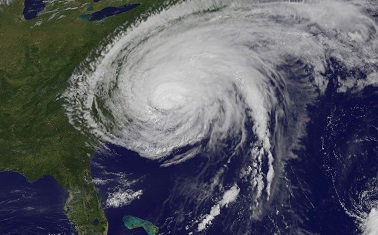










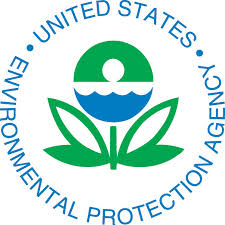 EPA’s Clean Power Plan,
EPA’s Clean Power Plan, 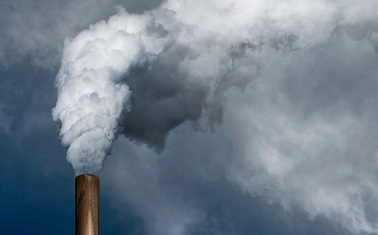
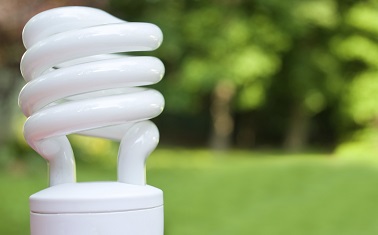 What would you say if I told you that about three-quarters of what you spend on electricity every month is wasted? Considering that Americans spend about
What would you say if I told you that about three-quarters of what you spend on electricity every month is wasted? Considering that Americans spend about 